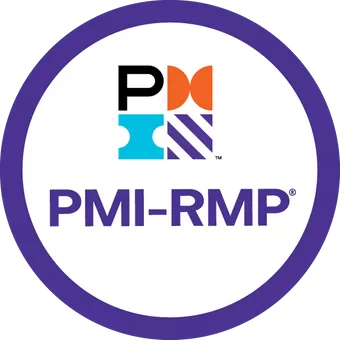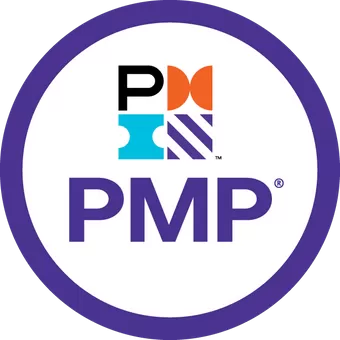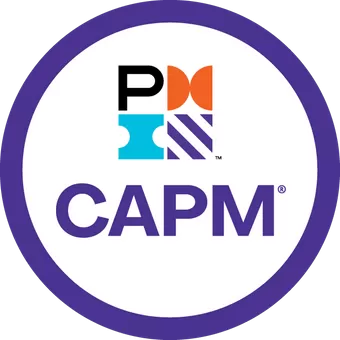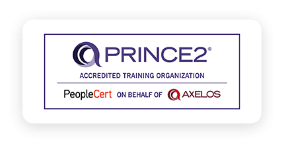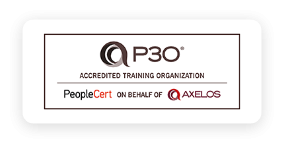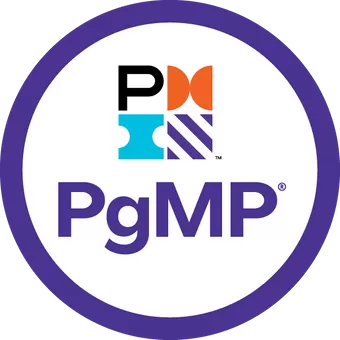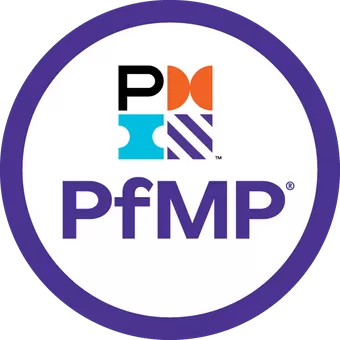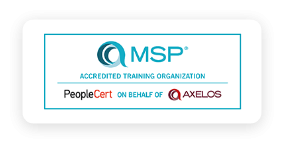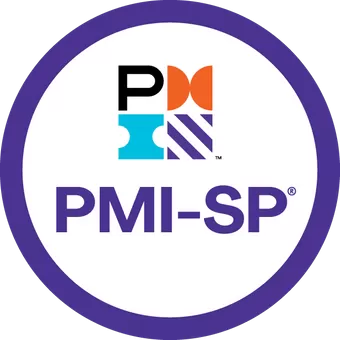
Scrum Project Management: Framework, Examples, And Pillars
Written By : Bakkah
26 May 2024
Scrum is an agile framework primarily used in software development but increasingly applied to other fields, emphasizing iterative and incremental development in short cycles called sprints. It enables teams to quickly respond to changing requirements and deliver value to customers.
At its core, Scrum relies on self-organizing, cross-functional teams working collaboratively towards common goals, fostering a culture of transparency and adaptation.
Key elements include roles (Product Owner, Scrum Master, Development Team), events (sprint planning, daily stand-ups, sprint reviews, retrospectives), and artifacts (product backlog, sprint backlog, potentially shippable product increment), all geared towards facilitating collaboration, feedback, and continuous improvement.
What is Scrum?
Scrum project management is an Agile framework that emphasizes iterative development, collaboration, and flexibility to deliver high-value products. In Scrum, projects are divided into short iterations called sprints, typically lasting 2-4 weeks. Each sprint begins with a planning session where the team selects items from the product backlog to work on.
During the sprint, the team holds daily stand-up meetings to discuss progress and identify any obstacles. At the end of the sprint, a review meeting is held to demonstrate the completed work to stakeholders, followed by a retrospective to discuss what went well and areas for improvement. Scrum enables teams to adapt to changing requirements and deliver incremental value throughout the project lifecycle.
Top Scrum Methodology Terms Definition
Here are some top Scrum methodology terms and their definitions:
1. Product Owner
The individual responsible for defining and prioritizing the product backlog, representing the interests of stakeholders, and ensuring that the team delivers value to the customer.
2. Scrum Master
The facilitator and servant-leader for the Scrum team, responsible for coaching the team on Scrum practices, removing impediments, and fostering a collaborative and productive environment.
3. Scrum Team
The self-organizing and cross-functional group of individuals responsible for delivering the product increment during each sprint. It typically includes developers, testers, designers, and any other roles necessary to complete the work.
4. Product Backlog
A prioritized list of all desired features, enhancements, and fixes for the product, maintained by the Product Owner. It serves as the single source of requirements for the Scrum team.
5. Sprint
A time-boxed iteration, usually lasting 2-4 weeks, during which the Scrum team works to complete a set of product backlog items and deliver a potentially shippable product increment.
6. Sprint Planning
A collaborative meeting at the beginning of each sprint where the Scrum team defines the sprint goal selects the backlog items to work on, and creates a plan for how to achieve the goal.
7. Daily Stand-up (Scrum)
A short, daily meeting where the Scrum team gathers to discuss progress, share updates, and identify any impediments or obstacles that need to be addressed.
8. Sprint Review
A meeting at the end of each sprint where the Scrum team demonstrates the completed work to stakeholders and gathers feedback for future iterations.
9. Sprint Retrospective
A meeting at the end of each sprint where the Scrum team reflects on their process identifies what went well and what could be improved, and develops a plan for implementing changes in the next sprint.
10. Definition of Done (DoD)
A set of criteria must be met for a product backlog item to be considered complete and potentially shippable. It ensures that all work meets the team's quality standards and is ready for release.
What is Scrum Framework?
The Scrum framework is an Agile project management methodology focused on collaboration and incremental value delivery. It divides projects into short iterations called sprints, emphasizing flexibility and adaptability to respond quickly to changes. With a focus on collaboration, transparency, and continuous improvement, Scrum enables teams to deliver high-quality products that meet customer needs and achieve project success. The Scrum framework consists of several key components:
1. Roles
Scrum defines three primary roles: Product Owner, Scrum Master, and Scrum Team. Each role has specific responsibilities within the framework.
2. Artifacts
Scrum utilizes several artifacts to facilitate transparency and communication within the team. These include the Product Backlog, Sprint Backlog, and Increment.
3. Events
Scrum events are time-boxed meetings that occur at regular intervals throughout the sprint. These events include Sprint Planning, Daily Stand-up, Sprint Review, and Sprint Retrospective.
4. Rules
Scrum defines several rules and guidelines that teams must follow to effectively implement the framework. These rules help ensure that the team maintains focus, collaboration, and continuous improvement.
Scrum Examples
These examples demonstrate how Scrum can be applied in various industries and projects, providing a flexible and iterative approach to project management that promotes collaboration, transparency, and continuous improvement. Here are some examples of Scrum implementation in various contexts:
1. Software Development
A software development team adopts Scrum to develop a new mobile application. They break down the project into sprints, with each sprint focused on delivering specific features or user stories. The team holds daily stand-up meetings to discuss progress, sprint planning sessions to select backlog items, sprint reviews to demonstrate completed work, and sprint retrospectives to reflect on their process and identify areas for improvement.
2. Marketing Campaign
A marketing team uses Scrum to launch a new advertising campaign. They create a product backlog with tasks such as market research, content creation, and campaign analysis. Each sprint focuses on completing a set of tasks, such as designing ads, writing copy, and setting up analytics. Daily stand-ups help the team coordinate their efforts, while sprint reviews allow stakeholders to provide feedback on campaign performance.
3. Product Development
A hardware engineering team applies Scrum to develop a new consumer electronics product. They break down the project into sprints, with each sprint dedicated to designing and prototyping specific components. The team holds regular sprint planning sessions to prioritize tasks, daily stand-ups to coordinate work, sprint reviews to demonstrate prototypes, and sprint retrospectives to identify design improvements and manufacturing optimizations.
4. Educational Course Development
An educational institution adopts Scrum to develop a new online course. They create a product backlog with modules, lessons, quizzes, and assignments. Each sprint focuses on developing and refining course content, with daily stand-ups to track progress, sprint reviews to demo completed lessons, and sprint retrospectives to discuss instructional design and learner feedback.
Pillars of Scrum
The pillars of Scrum represent the core values and principles that guide the framework's implementation. They provide a foundation for effective collaboration, iterative development, and continuous improvement. By adhering to these pillars of Scrum, teams can foster a culture of collaboration, transparency, and continuous improvement, enabling them to deliver high-quality products that meet customer expectations and achieve project success. The three pillars of Scrum are:
1. Transparency
Scrum emphasizes transparency in all aspects of the project. This means that information about the project, including progress, challenges, and decisions, is readily available and accessible to all stakeholders. Transparency promotes open communication, trust, and alignment among team members, stakeholders, and customers.
2. Inspection
Inspection involves regularly reviewing the product and the process to identify any discrepancies, issues, or opportunities for improvement. This includes inspecting the product increment during sprint reviews to ensure it meets quality standards and customer expectations. Additionally, the Scrum team inspects its processes and practices during sprint retrospectives to identify areas for optimization and adaptation.
3. Adaptation
Adaptation is the ability to make changes based on the inspection results to improve the product or the process. Scrum encourages teams to embrace change and respond quickly to new information, feedback, and evolving requirements. This may involve adjusting the product backlog, refining priorities, modifying plans, or updating practices to better align with project goals and customer needs.
The Application of Scrum in Project Management
Applying Scrum in project management means implementing the framework to plan, execute, and deliver projects iteratively. The Scrum Master facilitates events and fosters collaboration, while the Product Owner prioritizes stakeholder needs in the product backlog. By adhering to Scrum principles, teams can adapt to change, deliver quality products incrementally, and respond to stakeholder feedback, enhancing project success. Here's how Scrum is applied in project management:
1. Initiation
The project begins with defining the vision, objectives, and scope. The Product Owner creates the product backlog, a prioritized list of features, requirements, and tasks.
2. Sprint Planning
The Scrum team conducts sprint planning meetings to select items from the product backlog for the upcoming sprint. They define the sprint goal and create a sprint backlog, detailing the tasks needed to achieve the goal.
3. Execution
During the sprint, the Scrum team collaborates to complete the tasks identified in the sprint backlog. Daily stand-up meetings are held to discuss progress, identify obstacles, and adjust plans as needed.
4. Review
At the end of the sprint, the team holds a sprint review meeting to demonstrate the completed work to stakeholders. Feedback is gathered, and any necessary adjustments to the product backlog are made based on stakeholder input.
5. Retrospective
The team conducts a sprint retrospective meeting to reflect on the sprint process, identify what went well, and what could be improved, and develop action items for the next sprint.
6. Iteration
The process repeats for subsequent sprints, with the team continuously delivering increments of the product. Each sprint adds value to the product and allows for feedback-driven improvements.
Scrum Roles
These roles work together collaboratively within the Scrum framework to deliver value incrementally, adapt to changing requirements, and achieve project objectives. Each role has specific responsibilities and contributes to the success of the Scrum team and the project. In Scrum, the members of a Scrum Team are:
1. Product Owner
The Product Owner is responsible for representing the interests of stakeholders and ensuring that the Scrum team delivers value to the customer. They are accountable for managing the product backlog, prioritizing items based on business value, and defining the acceptance criteria for each item. The Product Owner collaborates closely with stakeholders to gather requirements, provide feedback, and make decisions about the product.
2. Scrum Master
The Scrum Master serves as a servant-leader for the Scrum team, facilitating the Scrum process, removing impediments, and fostering a culture of collaboration and continuous improvement. They coach the team on Scrum principles and practices, help resolve conflicts, and protect the team from external distractions. The Scrum Master also ensures that the Scrum events (such as sprint planning, daily stand-ups, sprint reviews, and retrospectives) are conducted effectively and that the team adheres to Scrum values and principles.
3. Development Team
The Development Team is a self-organizing and cross-functional group of individuals responsible for delivering the product increment during each sprint. They are accountable for all aspects of product development, including analysis, design, coding, testing, and documentation. The Development Team collaborates closely with the Product Owner to understand requirements and with the Scrum Master to overcome obstacles and achieve the sprint goal. The Development Team sizes and selects the backlog items they commit to completing during the sprint and determines how to best accomplish the work.
Techniques Scrum
In Scrum, several techniques and practices are commonly used to facilitate collaboration, communication, and productivity within the team. These scrum ceremonies or events
help Scrum teams effectively plan, execute, and deliver value in iterative and incremental cycles, fostering a culture of collaboration, transparency, and continuous improvement. Some of the key techniques in Scrum include:
1. User Stories
User stories are concise, written descriptions of desired functionality from an end user's perspective. They help capture user requirements and drive development efforts.
2. Product Backlog Refinement
Product backlog refinement involves regularly reviewing and prioritizing the items in the product backlog. This ensures that the backlog is well-groomed, with clear and actionable items ready for implementation.
3. Sprint Planning
Sprint planning meetings occur at the beginning of each sprint and involve the Scrum team selecting backlog items to work on during the sprint. The team defines the sprint goal and creates a sprint backlog detailing the tasks needed to achieve the goal.
4. Daily Stand-up Meetings
Daily stand-up meetings, also known as daily scrums, are short, time-boxed meetings where team members share progress, discuss what they accomplished since the last meeting, what they plan to do next, and any obstacles they encountered.
5. Sprint Review
Sprint review meetings are held at the end of each sprint to demonstrate the completed work to stakeholders. The team showcases the increment and gathers feedback for future iterations.
6. Sprint Retrospective
Sprint retrospective meetings occur at the end of each sprint to reflect on the team's process and identify areas for improvement. The team discusses what went well, and what could be improved, and develops action items for the next sprint.
7. Burndown Charts
Burndown charts visually represent the amount of work remaining in the sprint backlog over time. They help the team track progress and identify any deviations from the sprint plan.
8. Task Boards
Task boards, often represented physically or digitally, visually display the status of tasks in the sprint backlog, such as "to do," "in progress," and "done." They provide transparency and help the team stay organized and focused.
9. Definition of Done
The Definition of Done (DoD) is a set of criteria that must be met for a product backlog item to be considered complete. It ensures that all work meets the team's quality standards and is ready for release.
Scrum Process
The Scrum process consists of several iterative and incremental steps aimed at delivering value to the customer. By following the Scrum process, teams can effectively plan, execute, and deliver projects iteratively and incrementally, maximizing transparency, collaboration, and value delivery throughout the project lifecycle. Here's an overview of the Scrum process:
1. Product Backlog Creation
The process begins with the creation of the product backlog, a prioritized list of features, enhancements, and fixes that need to be addressed in the product. The Product Owner is responsible for maintaining the product backlog and ensuring that it reflects stakeholder priorities and business needs.
2. Sprint Planning
At the start of each sprint, the Scrum team conducts a sprint planning meeting. During this meeting, the team collaboratively selects backlog items to work on during the sprint based on their priority and capacity. The team defines the sprint goal and creates a sprint backlog, detailing the tasks needed to achieve the goal.
3. Sprint Execution
With the sprint backlog defined, the Scrum team begins executing the tasks identified for the sprint. They work collaboratively to develop and deliver the product increment, frequently communicating and coordinating their efforts to ensure progress toward the sprint goal.
4. Daily Stand-up
Throughout the sprint, the Scrum team holds daily stand-up meetings, also known as daily Scrum. These short meetings provide an opportunity for team members to synchronize their work, share progress, discuss any obstacles or impediments, and plan their activities for the day.
5. Sprint Review
At the end of the sprint, the Scrum team holds a sprint review meeting to demonstrate the completed work to stakeholders. During this meeting, the team showcases the product increment and gathers feedback from stakeholders, which may influence future sprint planning and backlog refinement.
6. Sprint Retrospective
Following the sprint review, the Scrum team conducts a sprint retrospective meeting to reflect on their process and identify opportunities for improvement. The team discusses what went well, and what could be improved, and develops action items to address any issues or challenges in the next sprint.
7. Repeat
The Scrum process continues with subsequent iterations or sprints, each lasting typically 2-4 weeks. With each sprint, the Scrum team incrementally delivers value to the customer, continuously refining and improving the product based on feedback and changing requirements.
Scrum Artifacts
In Scrum, artifacts are tangible work products used throughout the project to provide transparency and communication. They play a crucial role in facilitating collaboration, alignment, and decision-making for the team and stakeholders. Ultimately, they contribute to delivering high-quality products that meet customer needs. The three primary Scrum artifacts are:
1. Product Backlog
The Product Backlog is a prioritized list of all the features, enhancements, bug fixes, and other work items that need to be addressed in the product. It is managed and maintained by the Product Owner, who is responsible for ensuring that the backlog is up-to-date, well-groomed, and reflects the current priorities and needs of the stakeholders. The Product Backlog evolves as new requirements emerge, priorities change, and feedback is received from stakeholders.
2. Sprint Backlog
The Sprint Backlog is a subset of the Product Backlog that contains the list of tasks, user stories, or backlog items that the Scrum team has committed to completing during the current sprint. It is created during the sprint planning meeting and is owned and managed by the Development Team. The Sprint Backlog provides visibility into the work that needs to be done during the sprint and helps the team track progress toward the sprint goal.
3. Increment
The Increment is the sum of all the completed and potentially shippable product backlog items that are delivered by the Scrum team at the end of each sprint. It represents a tangible and usable piece of the product that provides value to the customer. The Increment is reviewed during the sprint review meeting and may be released or deployed to stakeholders for feedback and further validation.
Scrum Tools
There are numerous tools available to support Scrum teams in managing their projects, facilitating collaboration, and tracking progress. These are just a few examples of the many Scrum tools available in the market. When selecting a tool for your Scrum team, it's essential to consider factors such as usability, scalability, integration capabilities, and cost to find the best fit for your team's needs and preferences. Here are some popular Scrum tools:
1. Jira
Jira is one of the most widely used project management tools, offering features such as backlog management, sprint planning, task tracking, and reporting. It provides flexibility for Scrum teams to customize workflows and boards according to their specific needs.
2. Trello
Trello is a visual collaboration tool that uses boards, lists, and cards to organize and prioritize work. It's particularly useful for managing sprint backlogs, tracking tasks, and visualizing progress in a simple and intuitive interface.
3. Azure DevOps
Azure DevOps (formerly known as Visual Studio Team Services) is a comprehensive suite of tools for managing software development projects, including version control, agile planning, build automation, and release management. It offers integration with other Microsoft products and services, making it a popular choice for teams using Microsoft technologies.
4. Asana
Asana is a flexible project management tool that supports Scrum practices such as backlog management, sprint planning, task tracking, and collaboration. It offers a user-friendly interface and customizable features to help teams stay organized and focused on their goals.
5. VersionOne
VersionOne is a dedicated Agile project management tool that supports Scrum, Kanban, and other Agile methodologies. It provides features such as backlog grooming, sprint planning, release management, and performance metrics to help teams deliver high-quality software products.
6. Monday.com
Monday.com is a versatile project management platform that offers customizable workflows, task tracking, collaboration tools, and reporting capabilities. It's suitable for Scrum teams looking for a flexible and intuitive tool to manage their projects and track progress.
7. Scrumwise
Scrumwise is a lightweight Scrum tool that focuses on simplicity and ease of use. It offers features such as backlog management, sprint planning, task boards, and burndown charts to help teams manage their projects effectively.
Scrum vs. Agile
Scrum and Agile are often confused, but they're distinct concepts. Agile is a philosophy emphasizing flexibility and collaboration in software development, while Scrum is a specific framework within Agile, providing structured guidelines for managing work. Agile principles guide the overall development process, while Scrum offers a more prescriptive approach with defined roles, events, and artifacts. Here are some key differences between Scrum and Agile:
|
Differences |
Agile |
Scrum |
Scope |
Agile is a philosophy or mindset guiding how software development should be approached, focusing on iterative development, customer collaboration, and responding to change. |
Scrum is a specific framework within Agile, providing a structured process with defined roles, events, and artifacts for managing and delivering work. |
Structure |
Agile is more flexible and adaptable, allowing teams to choose from various methodologies (e.g., Scrum, Kanban, Extreme Programming) based on their specific needs. |
Scrum provides a more prescriptive approach, with defined roles (Product Owner, Scrum Master, Development Team), events (sprint planning, daily stand-ups, sprint reviews), and artifacts (product backlog, sprint backlog, increment). |
Implementation |
Agile principles can be applied in various ways depending on the team's preferences and context, allowing for experimentation and adaptation. |
Scrum provides a specific set of rules and guidelines that must be followed to implement the framework effectively. |
Scrum vs Kanban
While both Scrum and Kanban are Agile methodologies focused on delivering value efficiently, they differ in their structure, flexibility, approach to work in progress, and delivery methods. Scrum provides a structured framework with fixed roles and events, while Kanban offers greater flexibility and continuous workflow management without fixed iterations. Scrum and Kanban are both Agile methodologies used in software development, but they have key differences in their approach and implementation:
|
Differences |
Scrum |
Kanban |
Structure |
Follows a structured framework with defined roles (Product Owner, Scrum Master, Development Team), events (sprint planning, daily stand-ups, sprint reviews), and artifacts (product backlog, sprint backlog, increment). Work is organized into fixed-length iterations called sprints. |
Uses a visual board with columns representing different stages of work (e.g., to do, in progress, done). There are no prescribed roles or events, and workflows continuously without fixed iterations. |
Flexibility |
Provides a more rigid structure with fixed roles and events, offering clear guidelines for team collaboration and communication. |
Offers greater flexibility, allowing teams to adjust workflow and priorities dynamically based on capacity and demand. There are no fixed roles or events, enabling teams to tailor the process to their specific needs. |
Work in Progress (WIP) Limits |
Does not enforce WIP limits explicitly, but teams commit to completing a set of backlog items within the sprint duration. |
Utilizes explicit WIP limits for each stage of work on the board, preventing overloading and encouraging focus on completing tasks before starting new ones. |
Iterative vs. Continuous Delivery |
Focuses on iterative delivery through fixed-length sprints, with potentially shippable increments of work delivered at the end of each sprint. |
Emphasizes continuous delivery, with work flowing continuously through the Kanban board and completed items released as soon as they are ready. |
The Role of Scrum in Change Management
Scrum facilitates change management by offering a structured yet flexible framework. Embracing Scrum principles helps organizations manage change effectively, minimizing disruption and achieving desired outcomes efficiently. Here are several ways in which Scrum contributes to change management:
1. Adaptability
Scrum emphasizes adaptability and responsiveness to change. With its iterative and incremental approach, Scrum enables teams to continuously inspect and adapt their processes and deliverables based on feedback and changing requirements. This flexibility allows organizations to respond quickly to external changes in the market, technology, or business environment.
2. Transparency
Scrum promotes transparency by providing visibility into the project's progress, challenges, and priorities. Through artifacts such as the product backlog, sprint backlog, and burndown charts, stakeholders have a clear understanding of the work being done and can anticipate changes or adjustments as needed. This transparency fosters trust and alignment among team members and stakeholders, facilitating smoother change management processes.
3. Incremental Delivery
Scrum's focus on delivering value incrementally enables organizations to implement changes in a phased and manageable manner. By breaking down complex initiatives into smaller, achievable increments, Scrum reduces the risk associated with large-scale changes and allows for early validation and feedback. This approach minimizes resistance to change and increases buy-in from stakeholders by demonstrating tangible progress and results.
4. Collaboration
Scrum promotes collaboration and cross-functional teamwork, which are essential components of successful change management. By bringing together individuals with diverse perspectives and expertise, Scrum encourages open communication, knowledge sharing, and collective problem-solving. This collaborative environment fosters a sense of ownership and commitment to the change initiative, driving its successful implementation.
5. Continuous Improvement
Scrum's emphasis on continuous improvement aligns with the principles of change management. Through regular sprint retrospectives, teams reflect on their processes, identify areas for improvement, and implement changes to enhance their effectiveness and efficiency. This iterative approach to improvement ensures that organizations can adapt and evolve in response to changing circumstances and emerging opportunities.
Advantages and Disadvantages of Scrum Project Management
Scrum project management offers numerous advantages, Despite its drawbacks, effective implementation and support can help organizations harness the benefits of Scrum while mitigating its disadvantages.
Advantages of Scrum Project Management:
Scrum project management offers a range of benefits that enable teams to deliver value more effectively, enhance collaboration, and adapt to changing needs and priorities. Scrum project management offers several scrum values:
1. Flexibility
Scrum's iterative approach allows for flexibility and adaptability, enabling teams to respond quickly to changing requirements and customer feedback.
2. Transparency
Scrum promotes transparency through regular communication, visible progress, and clear accountability, enhancing trust and collaboration within the team and with stakeholders.
3. Faster Delivery
By breaking work into smaller, manageable chunks and delivering value incrementally in short iterations (sprints), Scrum enables faster delivery of usable products or features.
4. Continuous Improvement
Scrum emphasizes continuous improvement through regular reflection (sprint retrospectives) and adaptation, enabling teams to identify and address issues, enhance processes, and optimize performance over time.
5. Increased Stakeholder Engagement
Scrum involves stakeholders throughout the project, allowing for frequent feedback and collaboration, which leads to greater alignment between project outcomes and stakeholder expectations.
6. Empowered Teams
Scrum empowers self-organizing, cross-functional teams to make decisions and take ownership of their work, fostering creativity, innovation, and a sense of ownership.
7. Predictable Costs and Timeframes
Scrum's fixed-length iterations (sprints) and regular review of progress ensure predictability in terms of project timelines and costs, helping stakeholders manage expectations effectively.
Disadvantages of Scrum Project Management:
While Scrum offers many benefits, organizations should carefully consider these potential disadvantages and assess whether Scrum is the right fit for their specific needs and context. Some its potential disadvantages:
1. Complexity
Implementing Scrum requires a significant shift in mindset and practices, which can be challenging for teams accustomed to traditional project management methods.
2. Lack of Predictability
The iterative nature of Scrum can make it difficult to predict exact project timelines and outcomes, particularly for long-term planning.
3. Dependency on Team Collaboration
Scrum relies heavily on team collaboration and self-organization. If team members lack communication or collaboration skills, it can hinder the effectiveness of the Scrum process.
4. Need for Experienced Scrum Masters
Scrum requires skilled Scrum Masters to facilitate the process effectively. Inexperienced or poorly trained Scrum Masters may struggle to navigate challenges and ensure the success of the project.
5. Overemphasis on Short-Term Goals
Scrum focuses on delivering value in short iterations (sprints), which may lead to a lack of attention to long-term strategic planning and vision.
6. Difficulty in Scaling
While Scrum works well for small to medium-sized teams, scaling it to larger projects or organizations can be challenging and may require additional frameworks or methodologies.
When Should You Use the Scrum Methodology?
Scrum is a versatile methodology that can be applied to a wide range of projects and industries. However, it is essential to assess the specific characteristics and requirements of the project and the organization before deciding whether Scrum is the right approach. If the project aligns with the criteria mentioned above and the organization is ready to embrace the principles and practices of Scrum, then it may be appropriate to use Scrum methodology. Scrum methodology is best suited for projects that meet the following criteria:
1. Complexity and Uncertainty
Scrum is well-suited for projects with a high level of complexity and uncertainty, where requirements may evolve or change frequently. Its iterative and incremental approach allows teams to adapt to changing circumstances and deliver value incrementally.
2. Cross-Functional Teams
Scrum is most effective when implemented by cross-functional teams with diverse skills and expertise. These teams can collaborate effectively to deliver high-quality products and address complex challenges.
3. Customer-Centric Focus
Scrum is ideal for projects where customer feedback and satisfaction are paramount. By delivering working product increments at the end of each sprint, Scrum enables teams to gather feedback early and incorporate it into subsequent iterations, ensuring that the final product meets customer needs and expectations.
4. Iterative Development
Scrum is suited for projects that can benefit from iterative development and frequent delivery of value. By breaking down work into smaller, manageable chunks and delivering working product increments at regular intervals, Scrum helps teams minimize risk and maximize flexibility.
5. Organizational Culture
Scrum is most successful in organizations that value transparency, collaboration, and continuous improvement. Organizations that are willing to embrace change and empower self-organizing teams are well-suited for Scrum implementation.
Discover your untapped potential through Bakkah's top-tier project management courses
Embark on a journey to earn prestigious certifications such as Certified Associate in Project Management (CAPM®), PMI Agile Certified Practitioner (PMI-ACP®), Project Management Professional (PMP®), Risk Management Professional (PMI-RMP®), or master Projects In Controlled Environments (PRINCE2®). Elevate your career trajectory by acquiring the essential skills and certifications required to effectively lead and execute successful projects. Enroll today and propel yourself towards becoming a highly respected project management expert!
Conclusion
In summary, Scrum serves as an agile framework primarily utilized in software development, with growing applications in various sectors. It emphasizes iterative and incremental progress within short timeframes known as sprints, allowing teams to swiftly adapt to evolving requirements and deliver valuable outcomes to clients.
At its essence, Scrum relies on the synergy of self-organizing, cross-functional teams, all driven towards shared objectives. This fosters a culture centered on openness and adaptability.
Its key components encompass distinct roles (Product Owner, Scrum Master, Development Team), essential events (sprint planning, daily stand-ups, sprint reviews, retrospectives), and critical artifacts (product backlog, sprint backlog, potentially shippable product increment). Together, these elements facilitate seamless collaboration, constructive feedback, and ongoing enhancements.



